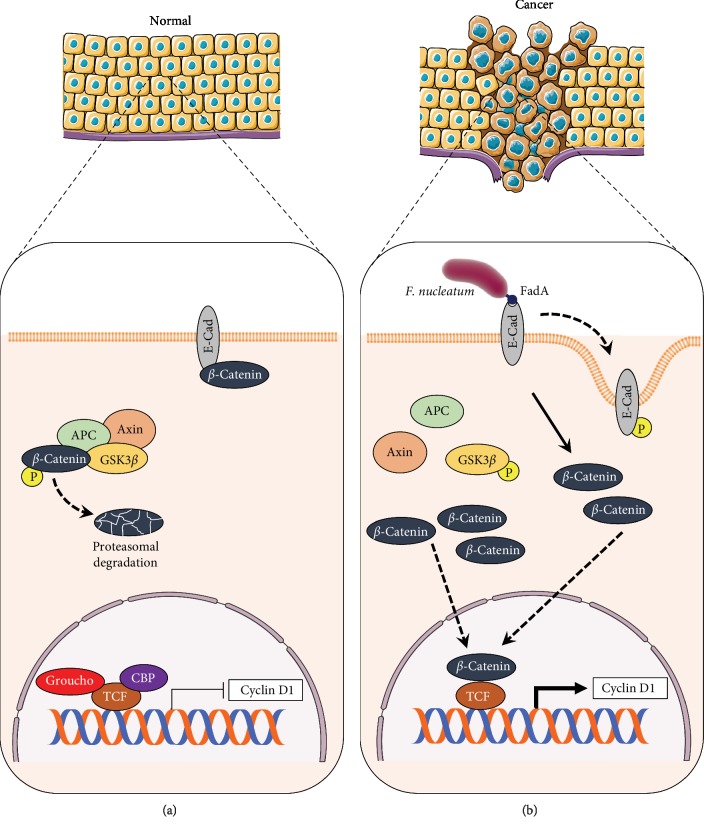Figure 3.
Microbiota-triggered EMT via E-cadherin/β-catenin. (a) In normal epithelial tissues, β-catenin activity is kept at low levels by degradation of the β-catenin cytoplasmic pool upon binding to the APC/Axin/GSK3β complex, or by membrane retention of β-catenin by interaction with E-cadherin. (b) Opportunistic infections by various pathogens, such as F. nucleatum in the human colon, can promote malignant progression. The virulence factor FadA is expressed on the surface of F. nucleatum. It binds to and induces phosphorylation/internalization of E-cadherin with consequent disruption of cell-cell junctions. Release of β-catenin from the plasma membrane and further activation of the Wnt signaling pathway (phosphorylation/degradation of GSK3β and disassembly of the APC/Axin/GSK3β complex) then occur, leading to enhanced cancer cell EMT and invasion. Top panels have been modified from Servier Medical Art, licensed under a Creative Common Attribution 3.0 Generic License; http://smart.servier.com/.

